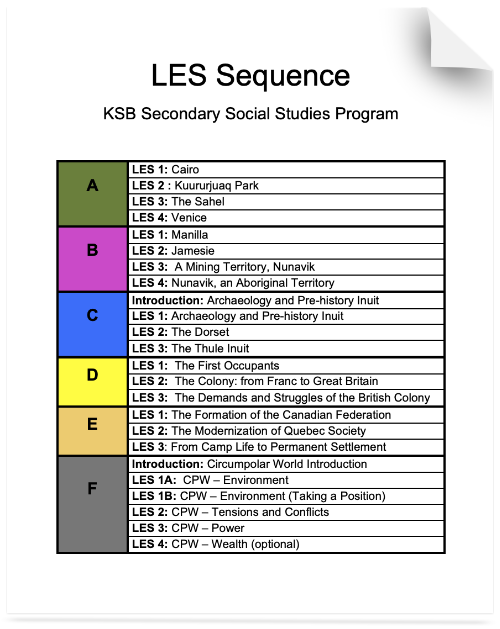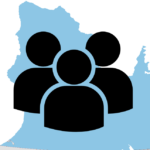Welcome to the Kativik Ilisarniliriniq Social Studies curriculum for Secondary students. This information page includes an overview of the curriculum and important information about the program structure, assessment and materials available.
Table of Contents
1. Program Overview
Kativik Ilisarniliriniq Social Studies program is competency based and adapted from the Quebec Education Program. The program considers Nunavik’s historical and contemporary reality, and introduces different global contexts, while integrating important knowledge from a range of disciplines in geography, history and science. High school students are invited to explore multi-narrative approaches to periods of history of Quebec and Canada. Nunavimmiut youth develop the required competencies as they build on the methodological and conceptual skills introduced in the primary Social Studies program.
Kativik Ilisarniliriniq program ensures that students achieve QEP educational goals and grow in their knowledge of the Nunavik journey towards autonomy in the past, present and future.
2. Teaching
While the students are presented key knowledge in the Learning and Evaluation Situations they work on, teachers focus on competency-based activities in class that support learning of transferable skills, including critical thinking. Teachers leverage opportunities to integrate learnings from other subjects such as language, math, science and art so that students can make connections and build their expertise and confidence. Proof of learning via oral interaction reflects the competence of storytelling and is key for classroom work. Project based reading and writing are the final goal of each LES.
Elder-centred approach
As knowledge holders, Elders have a very important role in Inuit culture. Elders can support students who are learning in the classroom setting. It is a good idea to address topics with the knowledge and participation of Nunavimmiut elders. Creating questions for interviews, and including films that feature elders, will have a motivating effect on students. View a range of interviews with some Nunavik elders.
Competencies
Here are examples of competencies for students in Sec. 2.1, 2.2 and 2.3:
- Examines social phenomena from a historical perspective
- Interprets social phenomena using the historical method
- Strengthens her/his exercise of citizenship through the study of history
The teacher guide for each block and the book accompanying the themes Geography and History describe the program competencies in detail. In the Resources section you will find links to the themed program guides.
Content of the program (blocks)
Kativik Ilisarniliriniq Social Studies program covers four themes that are organized into blocks A to F. The themes are Geography (blocks A and B), Archaeology and Inuit Prehistory (Block C), History and Citizenship (blocks D and E) and Circumpolar World (block F). There are three to four stages (called Learning Evaluation Situations, or LES) in each block.
Students move through one block per school year. In grades 7 (Sec.0), Sec. 1.1 and Sec. 1.2 students study the blocks A to C. In high school (Cycle 2) students study the blocks D, E and F. In Sec. 2.2 and Sec. 2.3 the students gain credits for graduation.
There is a three-year rotation of the blocks A to C and then another D to F, ensuring that each student has completed the program during their school career.
For this school year (2024-2025) students will study the following blocks:
- Cycle 1 (grade 7/Sec. 0, Sec. 1.1, Sec. 1.2): Block A
- Cycle 2 (Sec. 2.1 and Sec. 2.2): Block F
- Cycle 2, Sec. 2.3: Block F.
3. Assessment
Regular assessment in class supports learning and recognizes competencies. Students tackle project work and practice activities to show their understanding and expertise based on the competencies and evaluation criteria (called intellectual operations).
Intellectual operations closely reflect the competencies from the curriculum:
- Examine social phenomena of the present and of the past
- Situate in time and space
- Establish facts
- Characterize of historical phenomenon
- Make comparisons
- Determine explanatory factors and consequences
- Determine elements of continuity and change
- Establish connections between facts
- Establish causal connections
- Characterize the evolution of a society
The students practice through the activities presented in the Student Booklet. The activities are designed to offer students opportunities to gain grades throughout the year.
Students in Sec. 0, Sec.1.1 and Sec. 1.2 take a final assessment task at the end of the year. This can be in the form of a project or a presentation.
For students in high school, there is an end-of-year examination. In Sec. 2.2 and Sec. 2.3 the successful student is rewarded with 4 credits for the final examination.
4. Resources
Each block outlines the basic content required for students for their relevant school year. These blocks are different from each other and have a different number of LES (Learning Evaluation Situation). To go with each LES here is a Document File and an accompanying Student Booklet. For teachers there is a Teacher Guide for each LES that supports teachers with the central concepts that students need to understand. To give you a general ideal of how the school year will unfold in Social Studies, please refer to the Yearly Plans for each block below.
Yearly plans
Block “A” Geography
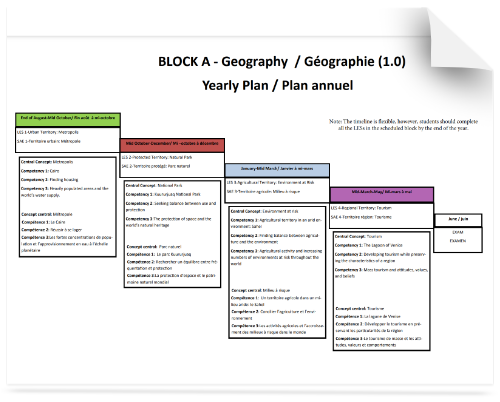
Block “B” Geography
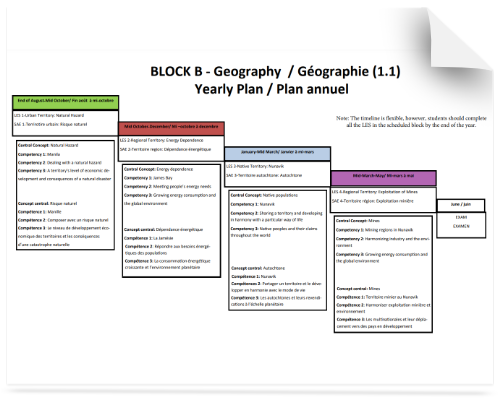
Block “C” Archeology
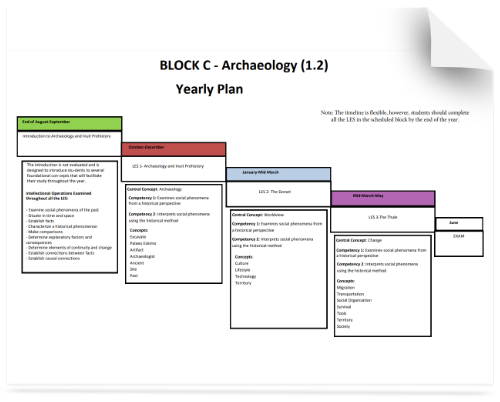
Block “D&E” History & Citizenship
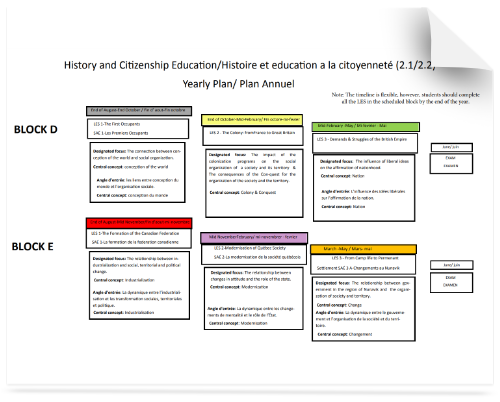
Block “F” Circumpolar World
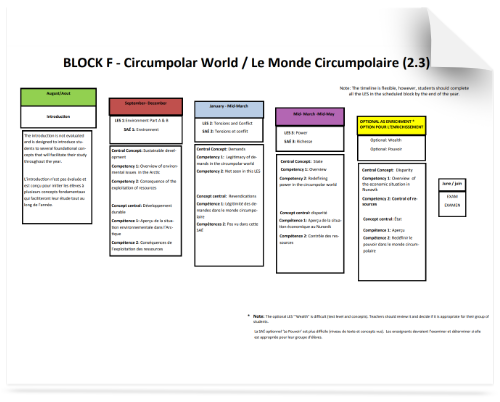
All the above materials can be ordered from the Kativik Ilisarniliriniq catalogue. They are also available electronically on Kativik Ilisarniliriniq platforms such as DBServer and the Resources Library.
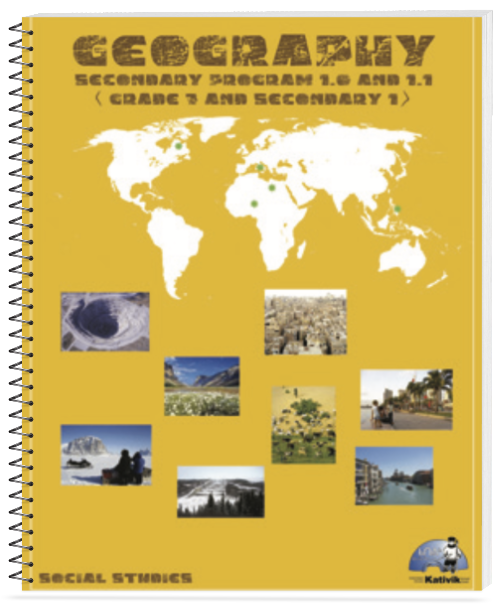
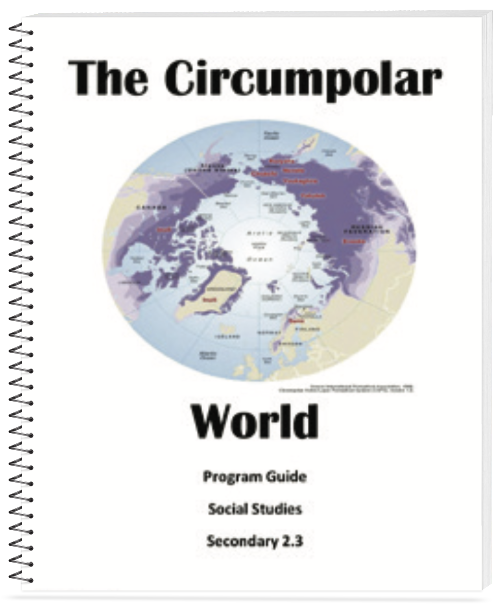
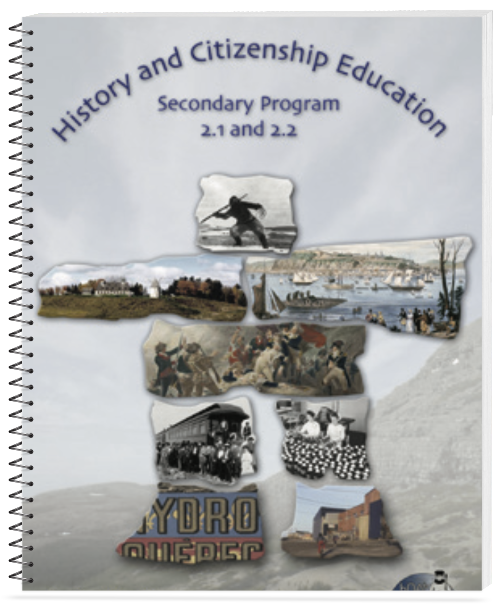
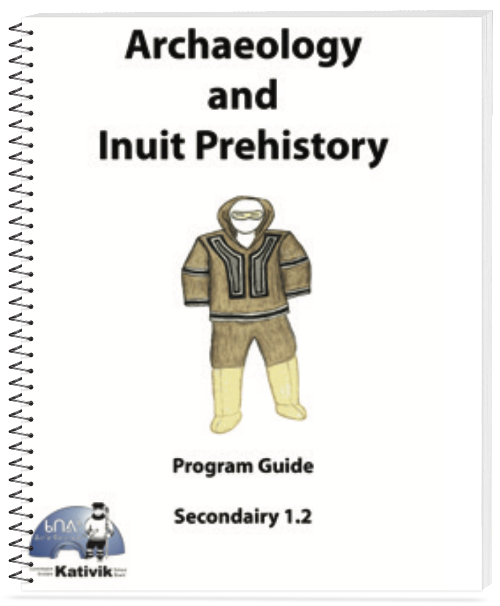
Ordering resources
- You can access the Kativik Ilisarniliriniq Catalogue here: Catalogue
- If you need to order materials from the catalogue, the Order Forms are here: Order form
Communication
Contact your education consultant via Microsoft TEAMS, email or phone.
Joanna Rowe
Joanna.Rowe@kativik.qc.ca
819 964-1136

